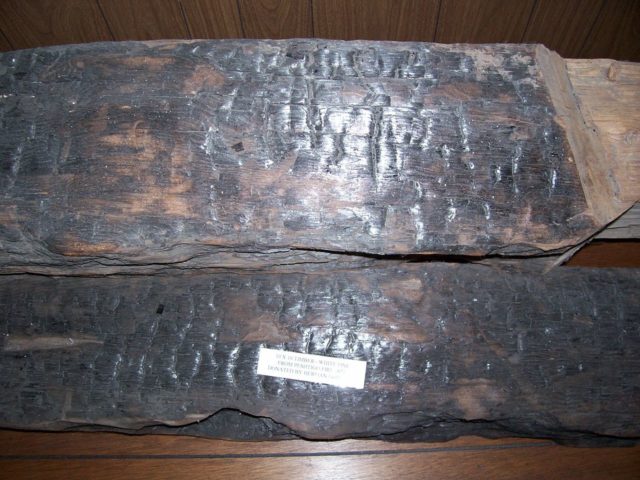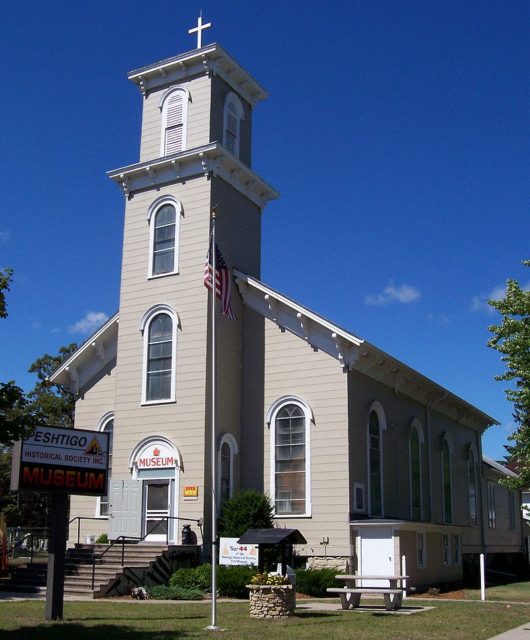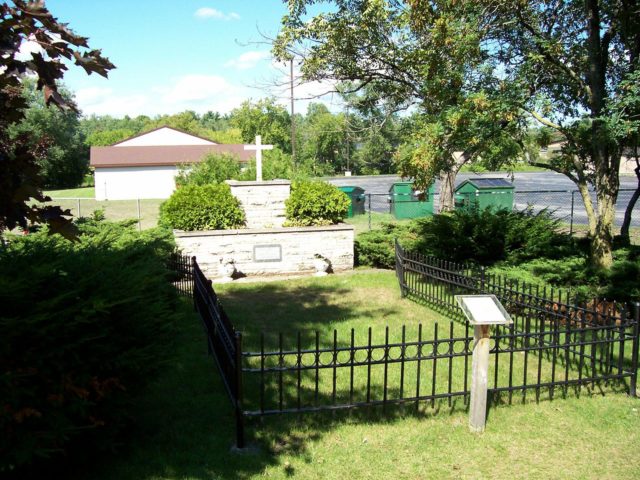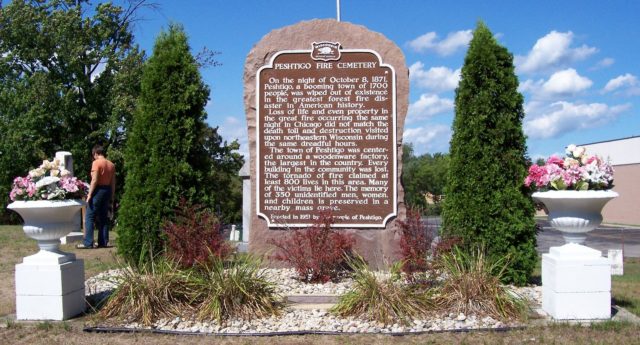It’s been nearly a century and a half since a terrible fire occurred around the town of Peshtigo, Wisconsin, wiping out 1.2 million acres and killing more than 2,500 people. This was the deadliest recorded fire in United States history.
Despite being massive and deadly, it was forgotten. And the reason–probably because it happened on the same day (October 8th) as another fire that became more famous: the Great Chicago Fire.
Back in 1871, the easiest way to clear paths for railroads and clear forest land for farms was by setting small fires. These small fires were a potential disaster and sometimes, under the right conditions, they went out of control.
This is what happened on that dreadful day near the town of Peshtigo. A cold front from the west brought some high winds that fanned the fire and made it even bigger. Soon, a huge firestorm started to consume everything in its path. It is said that a forest firestorm can have the same destructive potential as a nuclear bomb; they are nature’s equivalent of nuclear weapons.

With no one able to control the monstrous fire, it soon spread onto the other side of the Peshtigo River and in a matter of minutes, it surrounded the small town of Peshtigo. Those who survived the fire claimed that a fire whirl, a tornado of flames, was throwing railcars and even houses up in the air. Peshtigo River was the only thing that stood between the people and the fire. Many people managed to save themselves by getting into the cold waters of the river.
Those who were unlucky drowned or suffered hypothermia instead of being burned alive. From our perspective, it is hard to imagine how is it possible that a fire could take so many lives, but back in 1871, towns didn’t have the technology and resources to fight a fire that big. Another thing that posed a huge threat back then was the abundance of wooden buildings. Towns like Chicago or Peshtigo were almost completely built out of wood.

The only thing that could stop the fire was the sea water of Green Bay and the rain that started pouring. The epilog of the firestorm was devastating. Over 1,875 square miles (1.2 million acres) of forest was completely burned down, an area roughly twice the size of Rhode Island. During the fire, twelve settlements were destroyed and no accurate death toll could be determined because all of the records were destroyed together with the settlements.
It is estimated that the fire took the lives of several thousand people. Although many communities suffered during the fire, Peshtigo was the one that took the most damage, and that is why the fire was named after it. In 1870 Peshtigo had 1,749 residents; after the disaster, 350 bodies were buried in a mass grave, plus countless other bodies that were buried individually or not at all. This was done because whole families had died and no one was able to identify them. Almost half of the population of Peshtigo was gone.

Besides the obvious reason for the fire, a theory that appeared in 1883 suggested that falling fragments from the Comet Biela were to blame for the fires in Chicago and Peshtigo (as well as on few other places). This, of course, isn’t possible because meteorites are cold in the moments when they reach Earth.

The eighth of October was one strange and terrible day, a day of fires. The fires in Chicago and Peshtigo weren’t the only ones reported that day. There were four more happening at the same time across the United States: the Holland, Michigan fire, the Port Huron Fire of 1871, and The Great Michigan Fire in Manistee.
The Peshtigo Fire Museum (west of U.S. Highway 41) holds a collection of artifacts from the fire and some first-person descriptions of the event. Behind the museum, there is a graveyard dedicated to victims of the fire.
